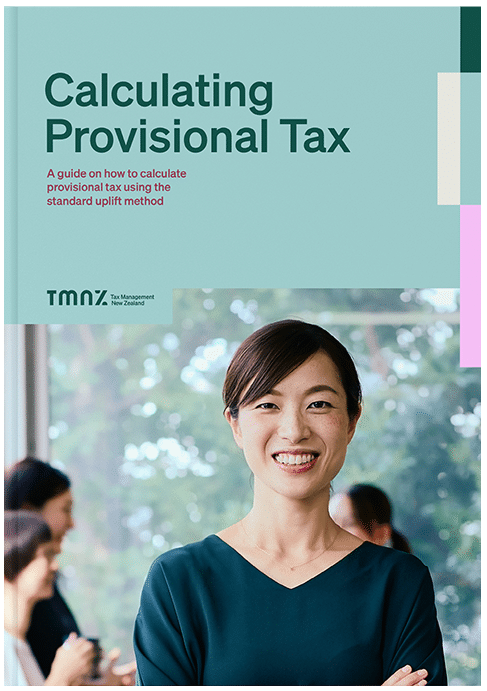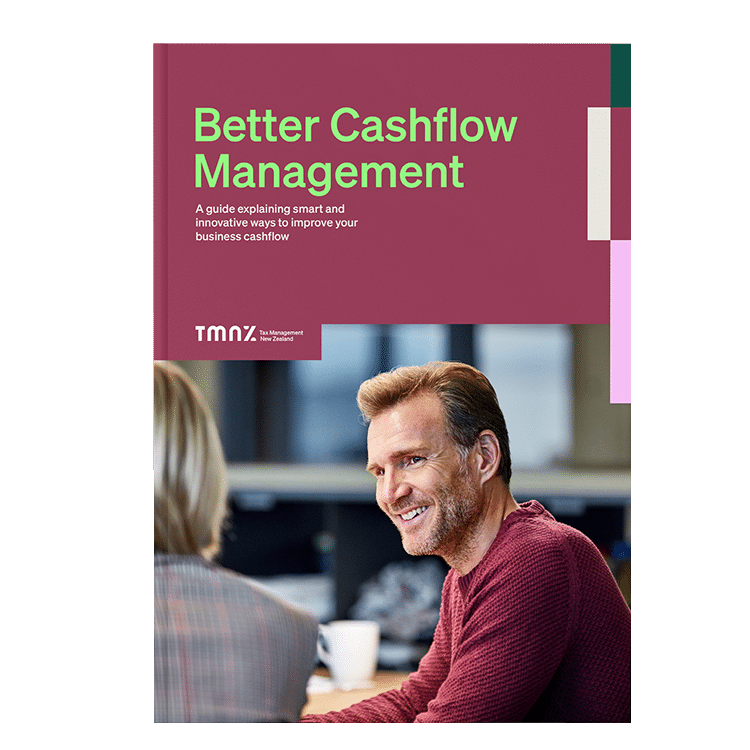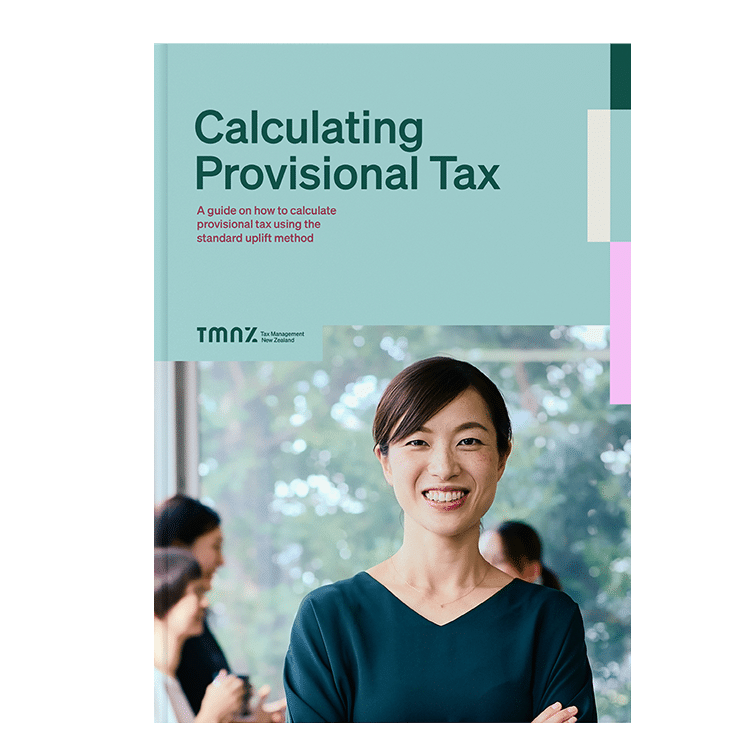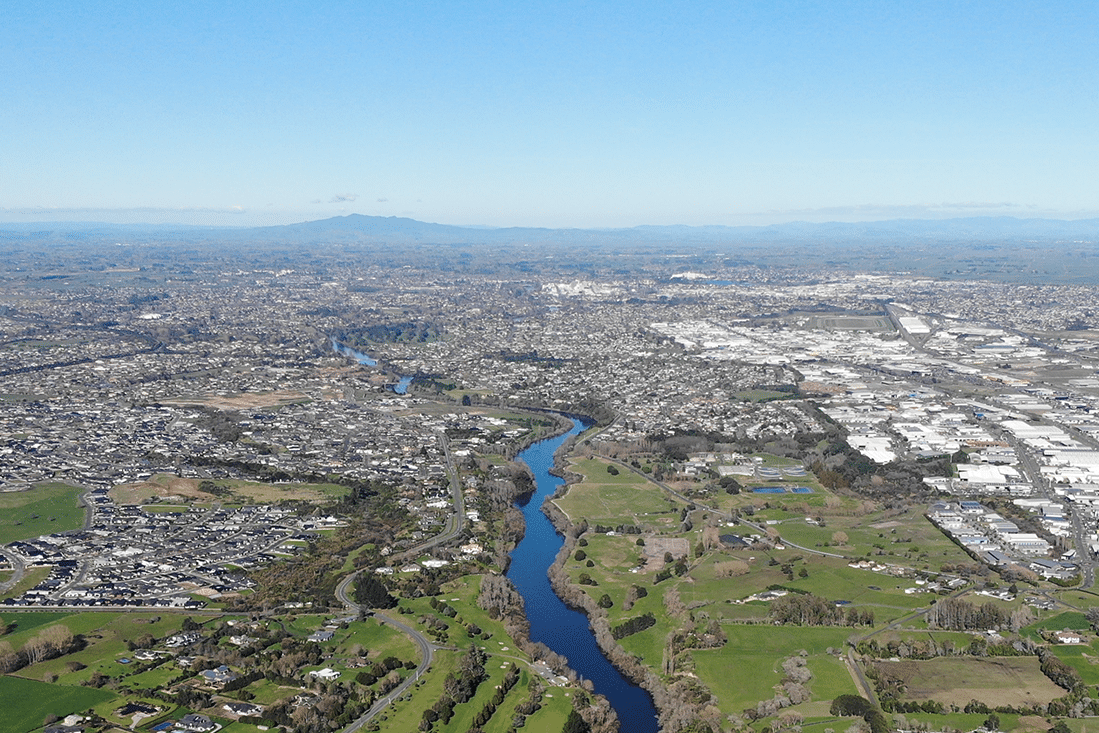Safe harbour
Safe harbour–what is it?
The safe harbour rule defines the threshold at which Inland Revenue use of money interest (UOMI) applies if income taxes for the year are underpaid.
Who does the safe harbour rule apply to?
The safe harbour rules in NZ apply to taxpayers with residual income tax (RIT) of less than $60,000, calculated using the standard uplift method. If a taxpayer meets the safe harbour criteria, Inland Revenue will only charge use of money interest on any unpaid taxes from the taxpayer’s terminal tax date onwards.
Current safe harbour rules in NZ
Before April 1 2022, taxpayers within the safe harbour threshold needed to pay their provisional taxes in full and on time. Inland Revenue removed this requirement from the beginning of the 2023 income year.
Taxpayers can also use the safe harbour rules during their first year of business when their residual income tax is less than $60,000.
This description is correct as of 27 February, 2023.
More useful tips and guides for paying tax
We’re here to support you with flexible and innovative tax solutions.
- Find a TMNZ Premium Partner for tax pooling advice
- Improve your cashflow with our Better Cashflow Management Guide

How to calculate provisional tax using the Standard Uplift Method and use tax pooling to avoid IR and late payment penalties
Our current guide was last updated in October 2022
Cashflow Guide
Better Cashflow Management
Managing cashflow is one of the biggest challenges that New Zealand businesses face. We’ve put together some tips and tricks to make it easier to ride those cashflow highs and lows through the year.

In this guide...
- Identify if you have a cashflow issue
- Common cashflow mistakes businesses make
- Cashflow tips and tricks including how to do a cashflow forecast, receive payments from customers faster, and ways to keep more cash in your business.
Current version available for download: October 2022
Previously published version(s): August 2019, February 2020
About this guide
In this guide, we provide some tips and tricks to improve your cashflow.
Including how to do a cashflow forecast, receive payments from customers faster, and simple ways you can keep more cash in your business.
How to calculate provisional tax payments
Guide: Calculating provisional tax
The uplift method is the default for calculating provisional tax. This guide is to help you know what your obligations are so that you know what to pay, when to pay and avoid Inland Revenue use of money interest.

This guide will help you with...
- How provisional tax is calculated
- Paying provisional tax instalments
- Safe harbour provisions
- Your first year in business
Current version available for download: October 2022
About this guide
Need help understanding how to pay provisional tax using the standard uplift method?
Tax Management New Zealand (TMNZ) fielded several queries from accountants and business owners alike after IRD changed the rules to coincide with the start of the 2018 tax year. It was a big reason we produced this guide.
The information in this guide has since been updated to reflect the provisional tax amendments contained up to and including the Taxation (Annual Rates for 2021-22, GST, and Remedial Matters) Act 2022. Therefore, it is based on our interpretation of the legislation as of 30 March 2022 and how we believe it relates to the payment of provisional tax for taxpayers using the standard uplift method. Where appropriate, we have cited the relevant sections of the Income Tax Act 2007 and Tax Administration Act 1994.
While this guide may not answer all your questions or deal with your specific situation, we at least hope it provides some clarity and basic understanding around these rules.
Enjoy the read.
Note: The examples provided in this guide are based on taxpayers with a 31 March balance date using the standard uplift method. They are liable to pay three instalments of provisional tax.
Different methods for calculating provisional tax
If your residual income tax (RIT) bill was more than $5,000 you’ll need to pay provisional tax.
There are four methods of calculating provisional tax in New Zealand. These are:
- The standard option
- The estimation option
- The ratio option
- The Accounting Income Method.
The two most widely used options for working out provisional tax payments are the standard calculation method (used in most cases) and the estimation method (only beneficial in specific scenarios).
How you work out your provisional tax payments depends on which calculation method you choose. Due to the range of provisional tax options available, it’s important to understand how each method of calculating provisional tax will affect your business.
Choosing the wrong method of calculating provisional tax may result in under – or overpayments, so we recommend talking to your financial advisor before deciding how to pay tax.
The standard calculation method (also known as the standard uplift model) is the most common way of calculating provisional tax in New Zealand. Download the guide above for a comprehensive resource on using this method so you know what to pay, when to pay and how to avoid IRD use of money interest and late payment penalties.
Basically, the standard calculation method is an ideal way to estimate provisional tax if over the coming year you expect to make more or roughly the same amount of income as the previous tax year.
When using this method:
- Your provisional tax payable is your previous year’s RIT plus 5%. This represents a 105% uplift on last year’s tax liability.
- For example, if your previous financial year’s tax was $5000, then your provisional tax estimate would be $5250.
- The total amount is split into instalments. Using the above example, this means three payments of $1750 on the due dates. You can find your provisional tax dates here.
- If you file GST returns every six months, you will only need to make two provisional tax payments.
When you use the estimation method, you’re working out your provisional tax based on an informed estimate of your expected profitability for the tax year ahead. To use the estimation method, calculate your total projected taxable income for the upcoming year, and work out the income tax liability on that income.
As with the standard calculation method, you’ll pay your provisional tax in three instalments throughout the year, based on the dates that align with your balance date. You can revise your income estimate at any point during the year — either upwards or downwards — and adjust your future provisional tax payments to reflect this.
The estimation method is particularly useful for businesses and sole traders expecting a significant drop from their previous year’s earnings. However, it’s important to be cautious when using this method. If you underestimate your tax for the year, IRD Use of Money Interest (UOMI) will apply. To avoid this, you’ll need to ensure that each instalment equals at least one-third of your final tax liability.
There’s also the potential for penalties if Inland Revenue considers your estimate to be unfair or unreasonable. If you choose to use the estimation method, paying through TMNZ can help reduce your exposure to IRD interest and penalties.
The accounting income method (AIM) is a pay-as-you-go provisional tax calculation for companies with a turnover of less than $5 million. Introduced by Inland Revenue in 2018, AIM helps sole traders and businesses manage provisional tax instalments in a way that better reflects their actual earnings.
The accounting income method can be a good choice for your business if:
- Your business is newly established, and you expect variable income tax obligations.
- Your earnings are growing beyond the previous year’s figures.
- You receive irregular income or seasonal earnings towards the end of your tax year, making it difficult to estimate your total taxable income.
- You have access to compatible accounting software to calculate provisional tax.
When using AIM, you are required to file a statement of activity with Inland Revenue through your accounting software. The IRD use this information to determine whether you must make a payment, and the required amount, and to calculate if you are due a tax refund. In most cases, you will be required to pay provisional tax six times per year. Your statement and payment schedule are based on your GST due dates:
- Monthly if you’re registered for a monthly filing.
- Two-monthly if you are registered for two or six-monthly filings.
- If you are not registered for GST, follow the two-monthly schedule.
Note: you cannot currently use tax pooling with the accounting income method so if you have liabilities to settle, unfortunately TMNZ will be unable to assist with payments.
The GST ratio method offers another way to calculate provisional tax and is particularly suited to GST-registered businesses. Like AIM, this method helps businesses whose earnings fluctuate throughout the tax year.
To apply for the ratio method, you are required to inform the IRD of your intention to use this method before the beginning of the tax year. You must also be registered for GST, file one or two-monthly GST returns, and have an income tax liability below $150,000 in the previous year.
To make a provisional tax estimate using the ratio method:
- Inland Revenue determines your ratio percentage by dividing your residual income tax for the previous year’s tax by your total GST taxable supplies for the same year.
- When the previous year’s figures aren’t available, the IRD will use your residual income tax and total GST taxable figures from the year before.
- Your provisional tax instalments are calculated by multiplying the ratio percentage by your GST taxable supplies from the previous two months.
- When utilising the ratio method, you will pay provisional tax instalments every two months (six times a year) alongside your GST returns.
Note that the GST ratio method is not a commonly used method to calculate provisional tax, but it is available as an option.
Privacy Policy
TMNZ's Privacy Policy
TMNZ's Privacy Policy
TMNZ's Privacy Policy
We respect the privacy of the people we deal with and are committed to safeguarding any personal information collected. We store any personal information collected from you, and otherwise act, in accordance with the Privacy Act 2020. This privacy policy outlines how we manage and store personal information and safeguard privacy.
Collection of information
We may collect and store information that is provided to us voluntarily or at our request, through our website or otherwise. This could include your name, email address, phone number, address, or other information you provide. We may also obtain information about you from public sources, such as the Companies Office.
We may also use third party services such as Google Analytics to collect non-identifiable information about visitors to our website automatically. This includes information about pages viewed, devices used to access the website, location data (at country level), and other general analytics.
Use of information
Any information provided to us is used only for the intended purpose. This may include:
- responding to an enquiry or request for further information
- providing services such as newsletters, events or training
- conducting our business operations or other lawful activities
- complying with legal obligations
- any other purpose that you expressly consent to.
Information storage and protection
We take reasonable steps to ensure the security of all information we collect or use. This includes appropriate physical and technical protections. Access to stored information is restricted to personnel who require it for legitimate purposes.
Despite best efforts, we cannot guarantee against unauthorised access or use of information while it is in our possession. Please notify us promptly if you become aware of any privacy breaches relating to information we hold.
Any personal information retained by us is kept only for as long as required for the purpose of providing our services to customers and as required by law.
Third party services
We may use reputable third party services (like email marketing platforms or website analytics tools, Anti-Money Laundering customer due diligence service providers) to support our own services and operations. We aim to ensure adequate privacy protections and compliance with this policy by any such third parties.
These third-party subprocessors process data that you input, which may include personal data:
| Sub processor | Description | Storage location |
|---|---|---|
| AWS | Hosting provide for TMNZ's tax pooling system and data | Australia, Singapore |
| Microsoft: Office 365, Teams, Sharepoint and Dynamics 365 | For file management, customer support, emails and chat | Australia |
| Adobe Marketo | Marketing automation: Automated email notifications, marketing preferences and personalised news and updates | Australia |
| Historic data stored securely in TMNZ's data warehouse | Australia | |
| Hotjar | User system behaviour and issue analysis | Ireland (EU) |
| 3CX | Phone call logs and recordings | Australia |
You may refer to the individual privacy policies of these sub processors for more information.
We make reasonable enquiries or assessments to confirm that third parties engaged by us treat any personal information used with those services consistently with our privacy policy and standards. However third parties outside New Zealand may not have to comply with the same level of data protection laws as those applicable in New Zealand.
Information sharing
We do not sell or trade personal information. Your information is only disclosed to third party service providers working under contract for us where necessary for carrying out stated purposes. Appropriate steps are taken to protect transferred information.
Information collected by us will not otherwise be shared unless you have consented to it, or disclosure is genuinely believed necessary to comply with legal obligations.
Your choices
You may choose to avoid providing certain information, although this may impact your ability to access some services or engage fully with our website or the TMNZ System. You are also able to review, correct or update any personal information we hold, or to make a subject access request for collected information. Contact our privacy officer at the details below to do so or if you have any other questions or concerns about this privacy policy or data protection.
Opt-In to Email Marketing
By submitting your email address or other personal information to us through any forms or sign-ups on our website, you agree to join our mailing list and receive marketing and promotional emails, messages, and other communications from us. We respect your privacy and provide a link to opt-out in all of our communications. By providing your information to us you consent to receiving messages until you choose to unsubscribe. The types of communications you consent to receive include informational newsletters containing TMNZ news and product updates, customer surveys, and other relevant communications. You can opt out of these communications or update your communication preferences at any time by clicking the link found in emails or by contacting us directly through the Contact Us page with your request.
Cookies
TMNZ’s website uses “cookies”. Cookies are small text files placed on your computer or device when you visit a website. Cookies allow a website to recognise a user’s device and store some information about the user’s preferences or past actions (e.g. which pages of a website were visited).
We use the following types of cookies on our Site:
- Google Analytics cookies
We use Google Analytics cookies to collect information about how visitors use our website. This means we also collect your IP address and location data. These cookies collect information anonymously, including the number of visitors, where visitors come from and the pages they visited. We use this information to understand how the website is being used and make improvements.
- Social media cookies
We embed videos and content from third party social media sites such as YouTube, Linkedin and Vimeo. These sites may place cookies on your device when you are watching or interacting with the content. Please see their respective cookie policies for more information.
- Analytics cookies
We use analytics cookies to help us understand how visitors arrive at and browse our website. It also helps us gather feedback to constantly improve the website. The information gathered relates to aggregated trends and individual data is completely anonymised.
- Website cookies
We place cookies necessary for website functionality. For example, they allow you to navigate between pages efficiently, remember preference settings and generally improve the website experience.
Managing cookies
You can manage website cookies in your web browser settings, and withdraw your consent for the use of cookies at any time by clearing or blocking them. Please note that certain features of the website will not function properly without cookies.
Changes to policy
We may amend this privacy policy, including the cookies information, from time to time to ensure it remains appropriate and compliant. The updated policy will be published on our website. Please check periodically for changes.
This privacy policy was last updated on 22/05/2024
Additional terms of engagement for CA ANZ members
The following information is for CA ANZ members to include in their engagement terms to meet their disclosure obligations under PS-3 Chartered Accountants Australia and New Zealand – New Zealand Professional and Ethical Standards – PS 3: Terms of Engagement – R2.7 Services from a service provider:
| Information | Disclosure | Reference |
|---|---|---|
| Service Provider | Tax Management New Zealand Limited. | TMNZ Terms and Conditions |
| Service used | TMNZ is an approved tax pooling intermediary that provides various tax pooling and finance solutions to taxpayers and their agents, including calculations and integrations to help determine their tax liabilities. | TMNZ Terms and Conditions |
| Customer data storage | Please refer to TMNZ’s sub processor list above for the location of customer data storage. | Sub processor list |
Contact us
Privacy Officer – privacy.officer@tmnz.co.nz
0800 829 888
TMNZ 5/23 Customs Street East
Auckland 1010
PO Box 105 435, Auckland 1143
Provisional Tax Guide
Guide: Provisional tax
[/movedo_title]
This guide outlines what every SME needs to know when talking about provisional tax with their accountant. If your business had to pay $2500 or more in income tax in the previous tax year, you are likely to be a provisional taxpayer. Due to the recent government response to COVID-19, we have updated the guide to reflect the new legislative changes. Read more on the COVID-19 tax proposal.
Current version available for download: April 2020
Previously published version(s): April 2019, August 2019
A brief explanation of what provisional tax is and who pays it. The following assumes it is not your first year in business and aligns with the provisional tax rules for the 2018 tax year onwards.
If this is your first year in business, refer to that chapter later in the guide as different rules apply.
Provisional tax breaks up the income tax you pay Inland Revenue (IR) by letting you pay it in instalments during the year instead of one big sum at the end of the tax year.
A taxpayer* may have to pay provisional tax when they earn income where tax is not deducted by the person or organisation from which it was received.
*Whether an individual, company or trust,
You may have to pay provisional tax if you:
- Run a business
- Are self-employed
- Engage in contract or freelance work
- Earn rental income
- Receive income from a partnership
- Earn money from overseas.
You would become a provisional taxpayer if the income tax due for the previous year (known as your residual income tax) was more than $2500. Your residual income tax is the amount of income tax you must pay, less any PAYE and other tax credits (except Working for Families) to which you are entitled.
Your tax year is based on your tax balance date. For most, it will be the period of 1 April to 31 March.
Terms of use
Terms of use
Introduction
This website (“Website”) is owned and operated by Tax Management New Zealand Limited (“we”, “us” and “our”). Use of the Website is governed by the following terms and conditions which constitute a legally binding agreement between you, the user, and us.
Acceptable use
You agree to only use the Website and services for legitimate and lawful purposes and in a way which does not infringe the rights of, restrict or inhibit the use and enjoyment of the Website by any third party. Such restriction includes conduct which is unlawful, harassing, defamatory, threatening or obscene. You agree to comply with all applicable laws and regulations.
Registration and Passwords
Some sections of or services offered may require you to register and provide certain identifying or other information. If you register, you agree to provide true and accurate information.
If registration involves choosing a password, you should choose a strong password and avoid reusing passwords used on other websites. You are responsible for maintaining the confidentiality of any passwords and restricting access to your computer. You agree to accept responsibility for all activities that occur under your account. Please notify us immediately of any unauthorised use of your password or account.
Intellectual Property, Copyrights and Logos
All content included on this site is protected by copyright and other intellectual property rights which are owned or controlled by us or by third parties who have licensed or provided their material to us. The uploading, posting or publishing of content that is not your own original work is strictly prohibited. You may download and temporarily cache content from the Website for your own personal non-commercial use. Any other copying, distribution, transmission, performance, display, alteration or use of any content for any other purpose is strictly prohibited without attributing us and, where applicable, the third party content providers we appoint. Any information, including but not limited to product designs, features, pricing, business strategies, or other business insights made available through use of our products, services, or websites is proprietary information belonging solely to us, and competitors or other entities are prohibited from accessing, using, or otherwise leveraging such information to gain competitive advantage or meaningful commercial/business insights, even if they have signed up by providing false personal information. We reserve the right to terminate, without notice, the accounts and access privileges of any users who are reasonably deemed to be competitors or working on behalf of competitors. To obtain permissions for the commercial use of any content, please contact us via the contact details below. Written permission must be obtained before using any of our logos or marks.
Disclaimer and Indemnity
While every care is taken to provide accurate information, we provide no guarantees about the accuracy, reliability, completeness or timeliness of any content, products or services available through the Website. We accept no liability for errors or emissions.
Your use of the Website and any services offered is at your own risk. All content is provided on an “as is” basis without any representations or warranties of any kind. We expressly disclaim all express and implied warranties including warranties of merchantability, suitability, fitness for purpose, accuracy and non-infringement.
We make no representations or warranties that use of the Website will be secure, uninterrupted or error free, that defects will be corrected, or that the Website is free of viruses or other harmful components. You assume full responsibility for any loss or damages resulting from your use of Website content or services.
You will indemnify us against any cost, losses or damages of whatever nature incurred by us as a direct or indirect result of your failure to comply with these Terms of Use. We will take reasonable steps to mitigate any such cost, losses and damages.
Changes to Website Offerings
Content on the Website and the services offered are subject to change without notice. We reserve the right to cease offering, and to remove, website offerings without limitation.
Changes to Terms of Use
We reserve the right to review and amend any of the terms and conditions contained in these Terms of Use at any time without notice. Your use of the Website following any changes constitutes your ongoing agreement to the revised terms and conditions.
Governing Law
These Terms of Use and any contractual or non-contractual matters arising out of it are governed solely by New Zealand law. Any legal proceedings must be carried out in New Zealand courts.
Contacting Us
Please direct any queries or concerns about our Website or services to us using the following contact details:
support@tmnz.co.nz
0800 829 888
TMNZ 23 Customs Street East
Auckland 1010
PO Box 105 435, Auckland 1143
FAQs
FAQs
Answers to some of the most common questions about tax pooling
FAQs
Answers to some of the most common questions about tax pooling
Is the service TMNZ provides legal?
Yes, we are a registered tax pooling intermediary with IRD and operate under legislation set out in the Income Tax Act 2007 and Tax Administration Act 1994.
Are my payments secure?
Yes, all payments made to us are made into bank accounts administered by an independent trustee, Guardian Trust. With more than 125 years’ experience in New Zealand, Guardian Trust oversees our tax pool account at IRD in which payments are held. They authorise all payments and tax refunds, as well as transfers to taxpayer accounts. At no stage do we have any contact with, or access to, your payments.
What tax payments can TMNZ assist with?
We can help manage provisional or terminal tax due date payments for the current tax year or one just completed. We can also help with other types of tax such as GST and PAYE if you have received a notice of reassessment from IRD due to a voluntary disclosure or IRD audit.
How much more time do I receive if I pay tax through TMNZ?
We give you an extra 75 days past your terminal tax date to pay provisional or terminal tax payments for the current year or one just completed. If you have received a notice of reassessment from IRD, you have an extra 60 days from the date this correspondence was issued to pay the additional tax you owe.
This seems too good to be true. Why does IRD allow the use of tax pooling?
IRD is mainly concerned with receiving the correct amount of tax from taxpayers. It supports the payment options we offer because they allow taxpayers to reduce their compliance costs while ensuring they pay the tax they owe throughout the year in a timely manner.
Will the IRD know if I have set up a payment arrangement with TMNZ?
You will have to tell IRD you are paying what you owe through TMNZ and they will note it in their records to ensure no proactive recovery action is taken by IRD’s debt collection team in relation to the tax amount owed.
Does TMNZ have access to my IRD account and the tax that I owe?
We do not have access to, or visibility of, your IRD account as we are a tax payment intermediary. If you require information pertaining to your IRD account or the amount of tax you owe, you will need to contact IRD or your accountant.
How do I sign up with TMNZ?
Signing up with us is fast and easy. Simply click on the link here and follow the instructions. Once you have confirmed your registration with TMNZ, you then add the taxpayer(s) whose tax affairs you manage.
How does TMNZ help me manage my cashflow?
TMNZ lets you pay upcoming provisional tax payments in a manner or at a time that suits you, without having to worry about IRD late payment penalties. Unlike IRD, which charges interest of 9.89% (as at 8 May 2025) if you don’t pay on the dates it prescribes, TMNZ charges a lower interest cost which can provide significant savings.
It offers two ways – Flexitax and Tax Finance – that can help manage upcoming provisional tax payments and cashflow depending on how you want to pay.
How does Flexitax work?
Flexitax will suit those who wish to pay provisional tax in instalments. There are no set amounts or payment dates – you pay what you can and when it suits your cashflow, provided you do so within the legal deadline (see below). Under Flexitax, TMNZ’s interest is recalculated on the core tax owing each month.
How does Tax Finance work?
Tax Finance lets you defer the full provisional tax payment to a time in the future that better suits your business. You pay a fixed, upfront finance fee and choose the date when you would like to pay. The finance fee is based on the amount of tax due and how long you are delaying your payment.
When must I pay my Flexitax or Tax Finance arrangement with TMNZ?
You have up to 75 days past your terminal tax date for the tax year the arrangement relates to pay what you owe with Flexitax or Tax Finance.
Why should I use TMNZ if I have missed or not paid enough provisional tax for the year?
IRD charges interest of 9.89% (as at 8 May 2025) if you have underpaid or missed a provisional tax payment. Late payment penalties may also apply. With TMNZ, you can you can get significant savings on Inland Revenue interest and eliminate any late payment penalties on the amount owed.
How can I pay the missed or underpaid provisional tax I owe IRD with TMNZ?
There are a few ways to pay missed or underpaid provisional tax:
- One-off payment: You pay the tax you owe and TMNZ’s interest in a lump sum. We call this Tax Purchase.
- Instalments: There are no set amounts or payment dates. You chip away at the amount owed over a longer period, paying what you can and when it suits your cashflow. TMNZ’s interest is recalculated on the core tax owing each month. We call this Flexitax.
- A future date: You choose a time that suits you to pay and pay TMNZ’s fixed interest cost upfront. You then pay the tax owed at the agreed upon future date. We call this Tax Finance.
Are there any conditions?
Yes, TMNZ can help with missed or underpaid income tax payments for the current tax year or one just completed, provided you are within the legal deadline (see below).
How long do I have to use TMNZ to pay provisional tax if I have missed or underpaid for the year?
You have until 75 days past the terminal tax date for that tax year to which the missed or underpaid provisional tax relates to pay what you owe through TMNZ.
How does TMNZ reduce my interest costs and eliminate late payment penalties?
We pay tax into our tax pool account at IRD on each provisional tax date and these payments are date-stamped. Upon receiving your payment, TMNZ arranges the amount of tax at the provisional tax date you require to be transferred from its tax pool account to your IRD account. IRD treats each payment as if it was paid on the original date it was due, removing any interest and late payment penalties incurred.
How long does it take for my payments to TMNZ to show up in my IRD account?
Normally payments made to TMNZ will show in your IRD account within three weeks after being transferred from the tax pool. However, please note this may take longer during the March-June window due to the larger-than-normal volume of transactions that are processed during this time.
How does TMNZ help me manage provisional tax risk and volatility?
TMNZ lets you make your provisional tax payments directly into its tax pool account and this enables you to:
- Earn a higher interest than IRD pays on overpaid tax by selling it to a taxpayer who has not paid enough.
- Get access to faster refunds – within three to five working days, and without filing a return.
- Swap payments between your provisional tax dates to smooth out payments.
- Use payments held in the tax pool as collateral to draw down short-term funds.
- Make one payment at each provisional tax date and redistribute the tax among group-related entities once the liability for the year is known.
Who should consider depositing provisional tax payments into the TMNZ tax pool?
Anyone can make their provisional tax payments into the TMNZ tax pool. However, those who have an annual income tax liability of more than $300,000 or experience huge fluctuations in their income from year-to-year will find it a valuable addition to their risk management strategy.
How does depositing into the TMNZ tax pool work?
Rather than paying tax directly to IRD on your provisional tax dates, you make these payments into TMNZ’s tax pool account at IRD. These payments are date stamped and recorded that they belong to you. Once the income tax liability for the year has been determined, we will work with TMNZ to see if we can improve your position if you have underpaid, overpaid or paid tax unevenly for the year. Upon your instruction, we will transfer your payments from the TMNZ tax pool to your IRD account. Your IRD statement will show these transfers at the original tax date once they have been processed, satisfying your income tax liability for the year.
Can I access any payments held in the TMNZ tax pool if required?
Absolutely. Any deposits made into the TMNZ tax pool can be refunded, transferred to your IRD account, sold or used as collateral to draw down short-term funds.
Will TMNZ notify me when I am due to make a deposit into the TMNZ tax pool?
Yes, we will send you reminders notifying you that your next instalment of provisional tax is due and the date by which you need to make payment. Payment instructions will also be included in these reminders.
Am I able to view my deposits held in the TMNZ tax pool?
Yes, your tax pool balances can be viewed by accessing your TMNZ account online.
Can TMNZ help me pay historic income tax or other tax types?
Yes, in situations where you have received a notice of reassessment from IRD due to an audit or voluntary disclosure, you can use TMNZ to get significant savings on Inland Revenue interest and eliminate late payment penalties if it is discovered you owe more PAYE, ESCT, RSCT, RWT, NRWT, income tax, GST, FBT, further income tax, and imputation penalty tax than you originally paid.
Are there any conditions?
Yes, the original tax return must’ve been filed and only the increase between the assessed and reassessed amount of tax can be paid through TMNZ.
Are there any exceptions to this?
Yes – if the original tax return hasn’t been filed when one should have been, and therefore there is no return to be reassessed, you can apply to the Commissioner of Inland Revenue to allow you to use tax pooling on this new liability. This is called asking for Commissioner’s discretion. If this pertains to your situation, contact us to discuss how we can help.
How long do I have to pay TMNZ if I receive a notice of reassessment from IRD?
You have 60 days from the date the IRD notice of reassessment was issued to pay the additional tax owed through TMNZ.
TMNZ Tax Drawdown allows you to use your tax payments in the pool as collateral to take out funds at attractive interest rates which are more competitive than the banks. You can request money at any time and it will land in your account within three to five business days (provided AML requirements are met). Access to money is guaranteed, and there’s no additional security required.
With Tax Drawdown you can borrow money for a minimum of four weeks or a maximum of up to 75 days after your terminal tax date. Once you’ve paid us back, we can continue to hold those tax payments in the pool (which will be available for a future drawdown) or transfer the payments to the IR to meet your tax liability.
Small businesses and larger companies alike can tap into Tax Drawdown, and there’s no limit to how much of your tax deposit you can withdraw. Contact us to discuss how Tax Drawdown can put you in control of your cashflow.
Book a tax pooling overview
Find out if tax pooling is the right solution for you.
Every business we work with has different needs. Book a call with one of our tax pooling specialists to find out how we can support you.
Tax pooling explained
What is tax pooling?
A better way to pay provisional tax
Tax pooling is all about freedom and flexibility
Instead of paying Inland Revenue directly on a given date, you can pay into the tax pool (of an Inland Revenue-approved intermediary – i.e. us) whenever you like.
Once you have paid off your tax, we’ll transfer the funds from the pool into your account at Inland Revenue, where it will show as paid on time.
It’s all about balance. Some businesses like to overpay their tax when they have the funds. Because of this, they’re actually helping cover businesses that need a little more flexibility with their tax payment arrangements. We like to think of it as business helping business.
Keep your cash flowing
When it’s time to settle your provisional tax, you can use funds from the tax pool.
And here’s where that balance we spoke about earlier comes into play…
If you’ve overpaid, brilliant. You’ve got another choice to make. Put that credit towards your next payment, sell it off (usually for much higher returns than Inland Revenue will offer), or have it refunded.
If you’ve underpaid, no problem. You can buy a little tax top up. And because that money has already been date stamped as paid on time, you’ll never see another late payment penalty. Not only that, but the interest we charge is significantly lower than Inland Revenue’s.
Want to know more? Get in touch and we’ll talk you through it.
A partnership that pays
Inland Revenue approved the use of tax pooling in 2003. Since then they’ve had nothing but good things to say about the benefits this revolutionary system brings to both government and business at tax time.
Today, Inland Revenue manage the registration of tax pooling intermediaries, of which we were the first, and (still are) the largest.
You’re good to go! Tax pooling has been approved for managing voluntary or normal provisional tax payments, reassessments of income tax, and increased obligations of other tax types due to tax audits or voluntary disclosures – like PAYE, GST, FBT, NRWT and Terminal Tax.
What is tax pooling?
A better way to pay provisional tax
Tax pooling has helped thousands of Kiwi business owners save more, while enjoying real cashflow flexibility. Below you’ll find everything you need to know about how our revolutionary system can benefit you and your business.
What is tax pooling?
A better way to pay provisional tax
Tax pooling has helped thousands of Kiwi business owners save more, while enjoying real cashflow flexibility. Below you’ll find everything you need to know about how our revolutionary system can benefit you and your business.
Tax pooling is all about freedom and flexibility
Instead of paying Inland Revenue directly on a given date, you can pay into the tax pool (of an Inland Revenue-approved intermediary – i.e. us) whenever you like.
When your tax bill arrives, let us know and we’ll transfer the exact amount to Inland Revenue on your behalf. The second we do that, it’ll be considered “tax paid”.
It’s all about balance. Some businesses like to overpay their tax when they have the funds. Because of this, they’re actually helping cover businesses that need a little more flexibility with their tax payment arrangements. We like to think of it as business helping business.
Keep your cash flowing
When it’s time to settle your provisional tax, you can use funds from the tax pool.
And here’s where that balance we spoke about earlier comes into play…
If you’ve overpaid, brilliant. You’ve got another choice to make. Put that credit towards your next payment, sell it off (usually for much higher returns than Inland Revenue will offer), or have it refunded.
If you’ve underpaid, no problem. You can buy a little tax top up. And because that money has already been date stamped as paid on time, you’ll never see another late payment penalty. Not only that, but the interest we charge is up to 30% lower than Inland Revenue’s.
Want to know more? Get in touch and we’ll talk you through it.
A partnership that pays
Inland Revenue approved the use of tax pooling in 2003. Since then they’ve had nothing but good things to say about the benefits this revolutionary system brings to both government and business at tax time.
Today, Inland Revenue manage the registration of tax pooling intermediaries, of which we were the first, and (still are) the largest.
You're good to go! Tax pooling has been approved for managing voluntary or normal provisional tax payments, reassessments of income tax, and increased obligations of other tax types due to tax audits or voluntary disclosures - like PAYE, GST, FBT, NRWT and Terminal Tax.
Tax on your terms
With a tax pooling intermediary like TMNZ, you can smooth out your tax payments up to 75 days after your terminal tax date, so you have up to 22 months longer to pay your tax bill.
And your tax pooling arrangement is as flexible as you want it to be.
Flexitax
With TMNZ Flexitax, you can pay in small regular payments or lump sums when it suits you. No up-front payment and, so long as you settle your arrangement by the date TMNZ provides, no IR late payment fees or interest.
Tax Finance
Or, if you know when you’ll have the funds, you can delay your payment to a date in the future using Tax Finance. With Tax Finance, you can look ahead and match your tax payments to seasonal highs, aligning tax obligations with your cashflow forecast.
Tax Deposits
You can also make your tax work for you with TMNZ Tax Deposits. With tax deposited into the pool, you can earn interest on overpayments (more than you would through IRD), move the funds forward to the next financial year or even draw on it as a line of credit.
Tax on your terms
With a tax pooling intermediary like TMNZ, you can smooth out your tax payments up to 75 days after your terminal tax date, so you have up to 22 months longer to pay your tax bill.
And your tax pooling arrangement is as flexible as you want it to be.
Flexitax
With TMNZ Flexitax, you can pay in small regular payments or lump sums when it suits you. No up-front payment and, so long as you settle your arrangement by the date TMNZ provides, no IR late payment fees or interest.
Tax Finance
Or, if you know when you’ll have the funds, you can delay your payment to a date in the future using Tax Finance. With Tax Finance, you can look ahead and match your tax payments to seasonal highs, aligning tax obligations with your cashflow forecast.
Tax Deposits
You can also make your tax work for you with TMNZ Tax Deposits. With tax deposited into the pool, you can earn interest on overpayments (more than you would through IRD), move the funds forward to the next financial year or even draw on it as a line of credit.
FAQs
A tax pooling company helps clients manage their provisional tax payments effectively. All IRD-approved intermediaries operate under legislation detailed in the Income Tax Act 2007 and Tax Administration Act 1994.
Tax Management New Zealand (TMNZ) was the first to introduce tax pooling in New Zealand — the tax pooling originators. This innovation was not only a first in New Zealand but also globally, revolutionising how taxpayers meet their provisional tax obligations.
A brief timeline:
Penalties before 1987
Before 1987, taxpayers and businesses in New Zealand did not face penalties or accrue interest for late or missed provisional tax payments.
1987 – Introducing the interest rate regime
The introduction of penalties and interest costs in 1987 by Inland Revenue (IR) aimed to encourage compliance and timely tax payments. Consequently, taxpayers were charged high-interest rates on underpayments or late payments but only received low-interest rates on overpayments.
2003 – A brand new system
Tax pooling is introduced as a framework by Inland Revenue in 2003. Under the new system, taxpayers can deposit surplus tax payments into an account, known as a tax pool, administered by IRD-approved tax pooling intermediaries. The intermediary acts as a facilitator, matching the tax shortfall of one taxpayer with the overpaid tax of another. Tax payments made in this way are approved by IRD and treated as a payment made on the date it was paid into the tax pool.
As a tax pooling intermediary, we collaborate with accountants and businesses to make tax payments easy. Tax pooling with TMNZ helps you meet your income tax obligations and avoid late payment penalties and interest charges. The best part? You receive more benefits and greater flexibility than you would paying Inland Revenue (IR) directly.
By using tax pooling, you can transfer tax payments from the pool if you aren’t able to pay your provisional tax on time. If you were to underpay provisional tax, IR would charge you late payment penalties (LPP) and use of money interest (UOMI).
Tax pooling enables taxpayers to consolidate their provisional tax payments, offsetting underpayments with overpayments within the same pool. Because we’re able to backpay your provisional tax payments in this way, we’re also able to avoid the IR penalties and fees incurred as it is no longer considered a ‘late payment’.
Answers to your provisional tax questions
Learn how to calculate tax owed and avoid late provisional tax penalties with our free guide.
Here’s what every business needs to know when paying provisional tax.
Premium TMNZ Accounting Partners
Premium TMNZ
Accounting Partners
Get help for your business from an accountant or tax advisor
experienced with tax pooling, through TMNZ’s premium
accounting partner network.
Premium TMNZ Accounting Partners
Get help for your business from an accountant or tax advisor experienced with tax pooling, through TMNZ’s premium accounting partner network.
Premium TMNZ Accounting Partners
Get help for your business from an accountant or tax advisor experienced with tax pooling, through TMNZ’s premium accounting partner network.
Become a TMNZ Premium Partner
The programme is a way for us to reward our most valued users so they can get the very best out of collaborating with us.
Home
A better way to pay provisional tax
A better way to pay provisional tax
A better way to pay provisional tax
Delay your payments
Pick a date in the future (up to 75 days after terminal tax), lock in today’s competitive interest rate by paying upfront and keep your cash in your business until your chosen payment date.
Smooth out your payments
It’s called ‘Flexitax’ for one reason. It’s flexible. Meaning you can make provisional tax payments regularly or in lump sums—up to 75 days after your terminal tax date—without penalties.
Delay your payments
Pick a date in the future (up to 75 days after terminal tax), lock in today’s competitive interest rate by paying up front and keep your cash in your business until your chosen payment date.
Smooth out your payments
It’s called ‘Flexitax’ for one reason. It’s flexible. Meaning you can make provisional tax payments regularly or in lump sums—up to 75 days after your terminal tax date—without penalties.
Delay your payments
Pick a date in the future (up to 75 days after terminal tax), lock in today’s competitive interest rate by paying up front and keep your cash in your business until your chosen payment date.
Ready to put your 15 Jan tax to work?
“Traditionally, we would pay our tax directly through Inland Revenue, but working with TMNZ makes paying tax so much easier, there are so many options. It’s significantly more flexible than the traditional ways of paying tax.”
– Duncan Rae, Financial Controller, Mitre 10 MEGA Dunedin
Inland Revenue approved
We’re TMNZ. Tax revolutionaries. The Tax Pooling originators. Approved by IRD, trusted by New Zealand businesses and their accountants, as the exclusive tax pooling partner of CA ANZ.
We’re here to make tax payments easy, save clients’ money and help with cashflow. We’re committed to delivering innovative tax solutions to more businesses and investing our profits for a restored and thriving Aotearoa.
Better cashflow management
Want to keep your money where it’ll do more good, for longer? You’ve come to the right place. Tax Management New Zealand gives you the flexibility to pay tax on your terms, when it suits your cashflow, so you can focus on growing your business.
And because it’s 100% Inland Revenue approved, you can rest easy knowing everything’s taken care of. Provisional tax pooling frees up working capital when you need it most, minimises the use of money interest costs, and removes the burden of late payment penalties.
Inland Revenue approved
We’re TMNZ. Tax revolutionaries. The Tax Pooling originators. Approved by IRD, trusted by New Zealand businesses and their accountants, as the exclusive tax pooling partner of CA ANZ.
We’re here to make tax payments easy, save clients’ money and help with cashflow. We’re committed to delivering innovative tax solutions to more businesses and investing our profits for a restored and thriving Aotearoa.


Better cashflow management
Want to keep your money where it’ll do more good, for longer? You’ve come to the right place. Tax Management New Zealand gives you the flexibility to pay tax on your terms, when it suits your cashflow, so you can focus on growing your business.
And because it’s 100% Inland Revenue approved, you can rest easy knowing everything’s taken care of. Provisional tax pooling frees up working capital when you need it most, minimises the use of money interest costs, and removes the burden of late payment penalties.
Inland Revenue approved
We’re TMNZ. Tax revolutionaries. The Tax Pooling originators. Approved by IRD and trusted by New Zealand businesses, since 2003.
Here to make tax payments easy, save clients’ money and help with cashflow. We’re committed to delivering innovative tax solutions to more businesses and investing our profits for a restored and thriving Aotearoa.


Better cashflow management
Want to keep your money where it’ll do more good, for longer? You’ve come to the right place. Tax Management New Zealand gives you the flexibility to pay tax on your terms, when it suits your cashflow, so you can focus on growing your business.
And because it’s 100% Inland Revenue approved, you can rest easy knowing everything’s taken care of. Provisional tax pooling frees up working capital when you need it most, minimises the use of money interest costs, and removes the burden of late payment penalties.
TMNZ & CA ANZ IRD Satisfaction Survey 2023
TMNZ and CA ANZ have worked together to bring you the results of the 2023 Satisfaction…
How you can use tax pooling like a savings account
Tax pooling allows companies to access a refund of their provisional tax payments paid to…
Manage IR exposure with corporate tax pooling
With the 28 November and 15 January provisional tax dates approaching, now is the perfect…
How tax pooling can help your tax management
Like many businesses, Andy experiences cashflow issues. He makes a profit but doesn’t…
Paying provisional tax – do you want it to be easier?
Kiwi business owners are all too familiar with the concept of provisional tax, and for…
Tax Pooling Basics and Benefits
Watch to learn how tax pooling works and how it can help accountants and businesses…
NZ Food Waste Champions 12.3 – Kai Commitment – Impact story
To help catalyse a system change in the way we manage and measure food waste, Whakatupu…
Mindful Money – Impact Story
Whakatupu Aotearoa Foundation helped Mindful Money increase the number of positive…
Te Kiwi Māia – Impact Story
Whakatupu Aotearoa Foundation invested in Te Kiwi Māia to help provide therapy for public…









